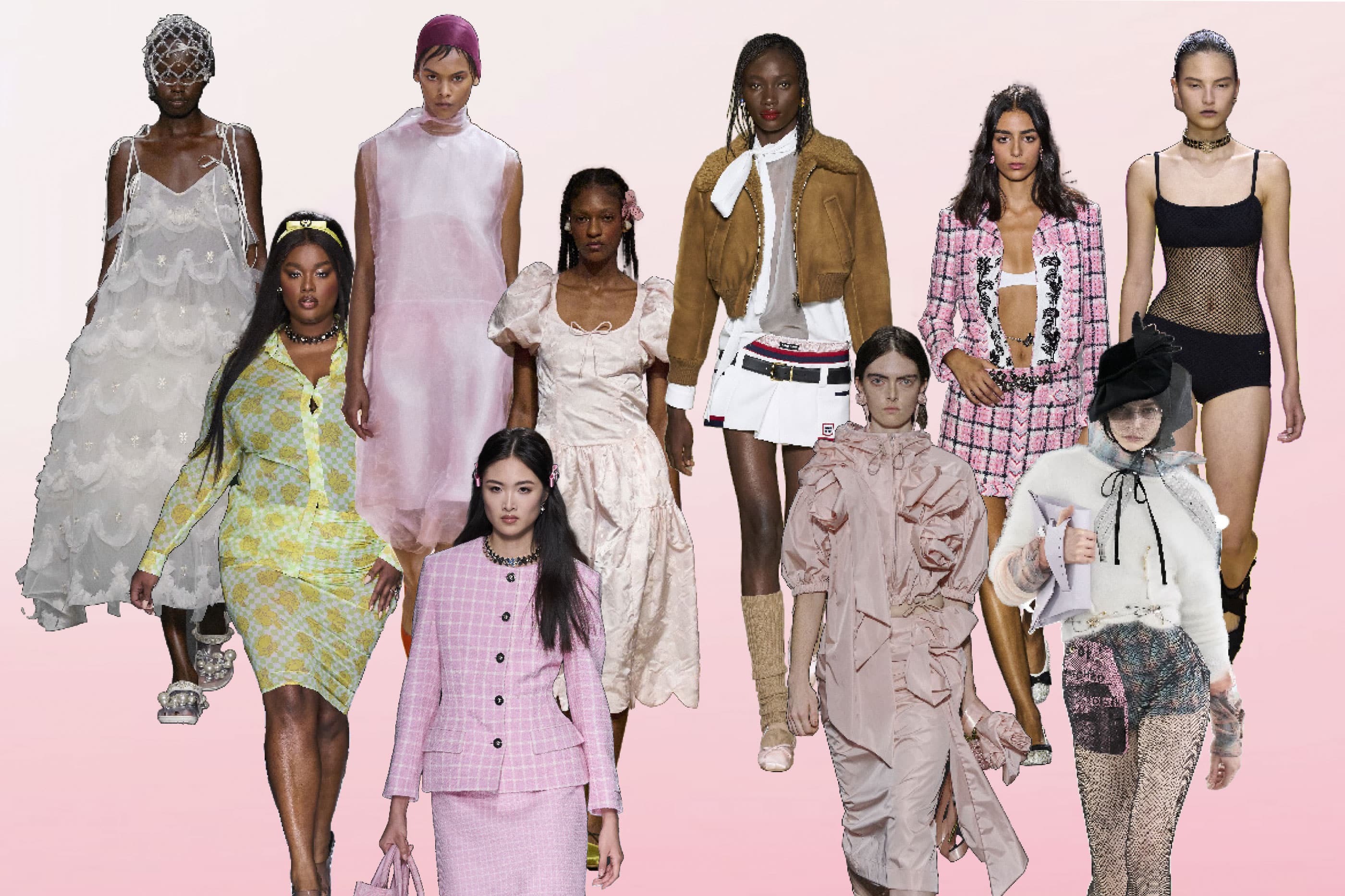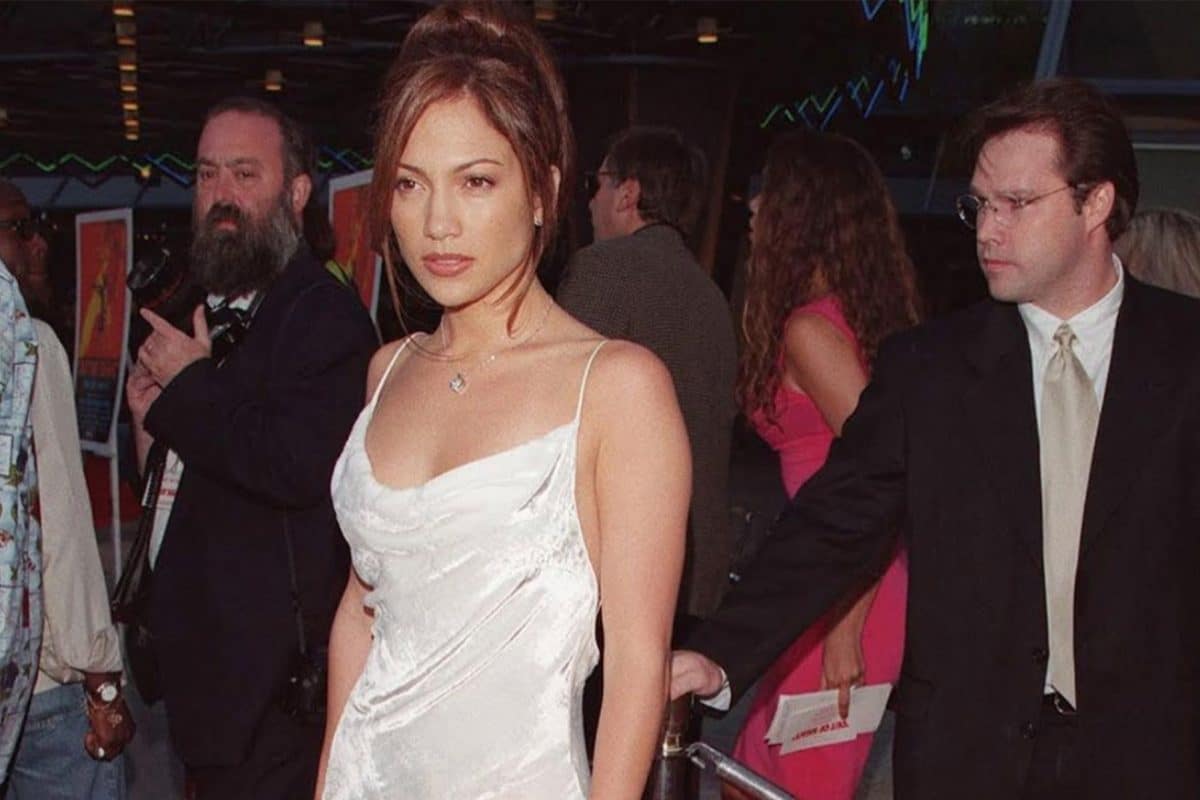
Designer Tessa Vermeulen vividly remembers her first pair of ballet flats as a young girl. The perfect pastel pink satin, covered in flowers and topped off with a metallic rim. When Vermeulen wore them, she felt invincible and when she launched her label, Home of Hai, in 2018, a recreation of her dream shoe was front of mind. “Ballet flats for me will forever be nostalgic, comfortable and playful.”
Home of Hai now has its own collection in collaboration with French shoe brand Reqins, available in colours including olive, lilac and pink – all of which are sold out online. “The ballet flat trend has really helped us get some more recognition globally.” Last popular in the mid-to-late 2000s, the shoe’s return was first forecast on Miu Miu’s Fall Winter 22 runway. Soon after, different iterations were everywhere. Alaïa’s fishnet version was the northern hemisphere summer’s must-have item, and Maison Margiela’s Tabi – once the most polarising style in fashion – had its ballerina being worn by everyone from Zendaya to Dua Lipa. Designer dupes flooded Etsy and in September, fashion Instagram account @dietprada declared we were about to hit “peak ballet flat” – as if battered 2014 Miu Miu pairs weren’t already being resold at retail price on Depop.
The post prompted thousands of comments from those old enough to have experienced the trend during its last height, begging others to protect their arches this time around. But if the Spring 2024 runways are anything to go by, ‘Fallen Arches Fall’ – as one dismayed commenter wrote – could soon be upon us. Ballet flats were seen in collections from Dior and Versace to Wales Bonner and Proenza Schouler. Chanel, a house intrinsically linked to the style, dressed models in a glittery bow-embellished slingbacks and white Mary Janes, and Jonathan Anderson’s Loewe offered a crystal-covered version.

Left: Simone Rocha s24. Right: Versace SS24.
The ballet flat’s resurgence, controversial as it may be, is part of a wider return to hyper-feminine fashion, seen as early as late 2021 on TikTok. Alongside images of Kirsten Dunst as Marie Antionette, 1975’s Picnic at Hanging Rock, and bedrooms filled with antique dressing tables and muted floral wallpaper, Gen Z embraced ‘Coquette’ and ‘Balletcore’ through bows, ribbons, and pastel pink aesthetics. In New York, women donning designer Sandy Liang’s school-girl-inspired skirts dubbed themselves “Sandy Liang Girls” and London’s Simone Rocha, already a designer with a cult-like demand for her romantic and subversive take on femininity, found a dedicated new young audience. Spin-off trends began, including ‘Blokette’ – a combination of the words ‘bloke’ and ‘coquette’, coined by fashion podcast Nymphet Alumni – describing the feminine-meets-sporty way of pairing ribbon-laden pigtails with football shorts, or the way Liang partnered with Salomon to release pink sneakers and adidas released their now-sold-out sports short with lace detailing on the trim.
Once mostly existing within internet subcommunities and women living within the confines of New York’s Lower East Side, the trend has since gone mainstream. Trendalytics reports searches for “coquette” have risen by 47.4 per cent since this time last year, and social engagement for the term by +1,100 per cent. Though it feels like we’re at the peak of bow mania, recent runways showed designers forecasting heightened consumer demand through Spring 2024.
In New York, Christian Siriano debuted a whole ‘Balletcore’ collection, Mirror Palais dressed models in corseted gowns with ruffles, lace and velvet chokers, and Puppets and Puppets added rosettes on top of blazers. In London, Richard Quinn’s floral-backdropped show had oversized bows around model’s waists and necks and Molly Goddard’s signature tulle and ruffles offered a grown-up, sophisticated adoption of the trend. The Italians followed suit when Prada went pastel in Milan and at Versace, bows adorned both models’ hair and feet. Paris Fashion Week saw Miu Miu replace its pleated micro-miniskirts with ruffled versions, and Victoria Beckham’s ballet-inspired show feature tulle dresses reminiscent of the dancer-turned-designer’s childhood tutu. Ribbons were spotted everywhere from Nina Ricci to Maison Margiela and pearls made their way from adorning Crocs at Simone Rocha to dangling from model’s sunglasses at Kimhekim. Rocha’s finale – real, rose-boned dresses, which the designer said over email were “seamed inside almost like the boning on a corset but in these more organic shapes, which moved around the body” – was outshone only by Undercover in Paris, which saw Japanese designer Jun Takahashi create a butterfly terrarium for theirs. The overwhelming aesthetic was one of innocence, delicacy and cuteness; a saccharine return to girlhood.

Left: Chanel SS24. Right: Sandy Liang SS24.
Simultaneously, online we entered the depths of Girl Internet. The girls began ‘Girling’, taking ‘Hot Girl Walks’ and eating ‘Girl Dinners’, doing ‘Girl Math’ and ‘Girl Physics’. Two of the year’s biggest pop culture moments – Taylor Swift’s Eras tour and the Barbie movie – only added fuel (and friendship bracelets) to the fire. So, what does it mean that we’re all dressing – and acting – like girls?
There are endless interpretations of what this overarching gravitation towards youth aesthetics represents, but to truly understand the current chokehold coquette has on culture, we must first look back. Having originated in Italian theatrical traditions as early as the 16th century, the coquette figure became an emblem of French femininity in Ancien Régime comedy, defined as being flirtatious, frivolous, acquisitive and vain. Bows later became inextricably linked to Marie Antoinette’s opulent oeuvre in the 18th century. The trend as we know it now is an evolution from a style that first emerged on Tumblr in the early 2010s called ‘Nymphette’ or ‘Lolita’ (in reference to the novel of the same name about a middle-aged man who becomes sexually obsessed with pre-pubescent girls). Driven largely by a Born to Die-era Lana Del Ray, it consisted almost exclusively of thin, white women. This association has critics saying women today are self-infantilising themselves and romanticising traditional, religious, gendered, conservative values (the ‘trad wife’ trend – a glorification of the 1950s housewife ideal – is made up of similar visual aesthetics).
But while the Tumblr era felt akin to the Oxford English Dictionary’s definition of coquette: a woman who is “eager to please through her appearance (…) given to flirting or coquetry,” 2023’s interpretation, with its Gen Z cleanse, seemingly has the opposite mindset. Instead of hyper-focusing on and sexualising innocence, today’s aesthetic is about embracing one’s girlhood as childhood nostalgia and as a means to connect with other women: a push away from the “not like the other girls” early adult introduction to misogyny through ultra-feminine (and oftentimes uniform) dressing, and reclamation of the girlish aesthetics we shed during early adulthood in a bid to be taken seriously. It’s reminiscent of third-wave feminism in the 1990s, which championed the reclamation of girlish things like pop music, makeup and high heels.
Claire Marie Healy, founder of research studio Girlhood Studies and author of a new book on the subject with Tate Publishing, thinks there are a multitude of factors coexisting to create the culture of cuteness we’re seeing today: “a desire to dress playfully in reaction to years of COVID-dressing, seeking aesthetic pleasures, and cherishing one’s girlhood, which isn’t only a time of passivity and weakness, but a time of creativity,” Healy explains. “Especially if you are a millennial, for whom girlhood was a time of self-exploration and freedom on the internet, without the current co-optation and commercialisation of those spaces.”

Left: Miu Miu FW22. Right: Margiela FW23.
I text a friend, who, following Liang’s show, dug out her private-school pleated skirt and posted a photo of herself wearing it with Salomon sneakers, white lace-trimmed socks and Swedish loop braids in her hair. “It’s about embracing the playful nature of femininity without sexualising it,” she said of her reasoning for rebranding as a ‘Sandy Liang Girl’. “The current Catholic schoolgirl look isn’t prudish in a Christian-core way, or sexualised to suggest you are infantilising yourself for the male gaze. It’s screaming, ‘Give me back my girlhood, it was mine first.’ It’s for the teenage girls inside the women in their 20s and early 30s, who are self-medicating their crippling anxiety with pink ribbons, Y2K rhinestones, and pleated plaid skirts.” The accessibility of the trend resonates, too. Unlike ‘Quiet Luxury’, where you need access to luxury designers like The Row or Khaite, coquette aesthetics can be accessible and crafty: a ribbon here, a bit of lace there; plaits, a clip and an old-school skirt.
Ballet flats are perhaps the best example of this back-and-forward pull. The unavoidable link between cuteness and sexualisation; pleasure and pain. Not only are the shoes undeniably bad for our feet, but the ballet shoe – or pointe shoe – is intrinsically linked to a sport in which dancers are taught to look perfect while silently tolerating immense agony: hiding battered, bloody feet behind pastel pink shoes adorned with ribbons. Can our wearing them really be divorced from this history? In a practical sense, “in a supposed era of the investment piece, [ballet flats] have no use in our modern life and the way women necessarily have to move around. But like a lot of items that have a long history entangled with girlhood, there is something else going on when we wear them as women: a resistance to the idea of having to wear useful things at all, or even having to work/perform labour, or having to be sexual, or having to be mothers,” Healy says. “There is something freeing about that.”



